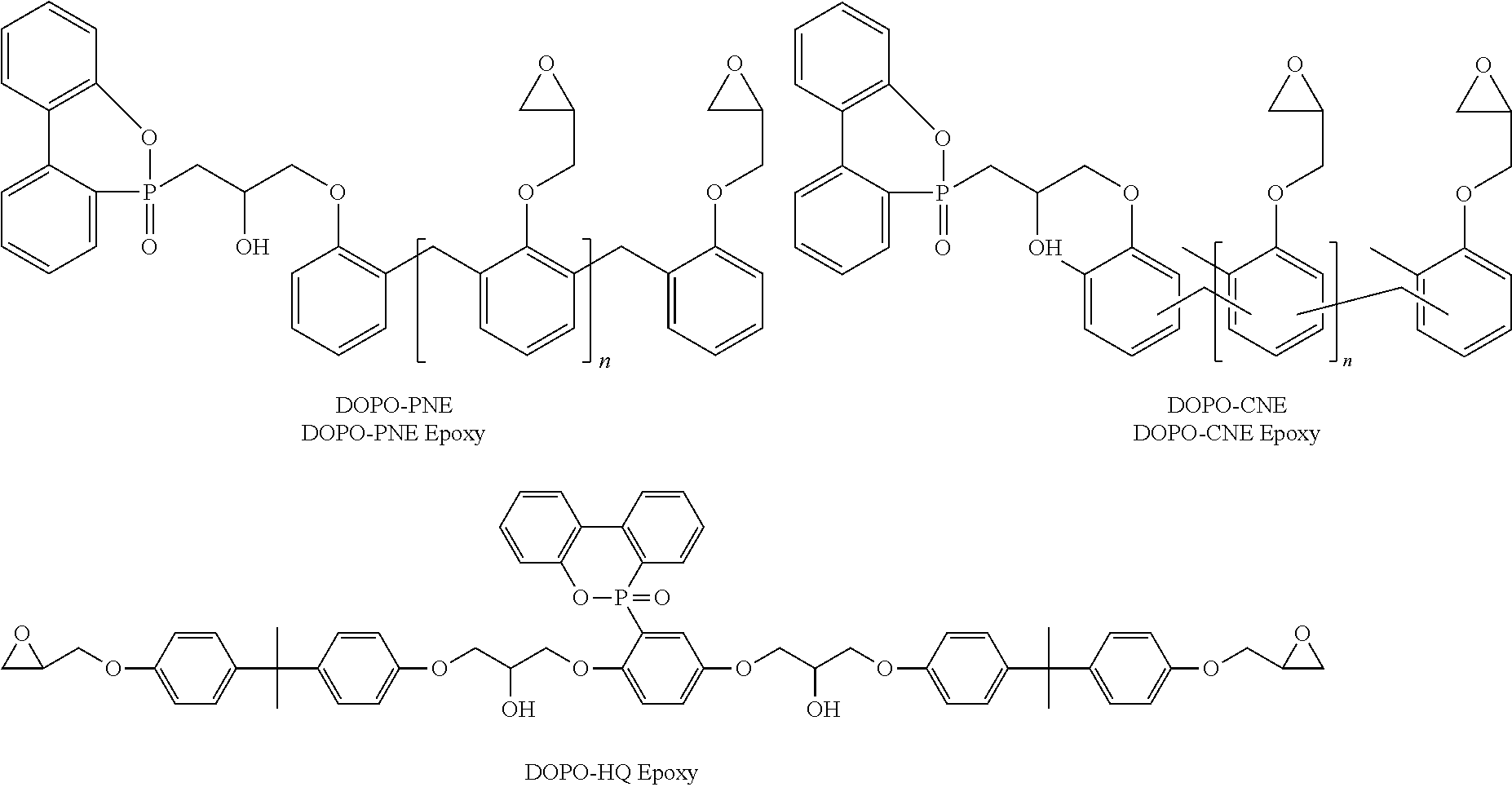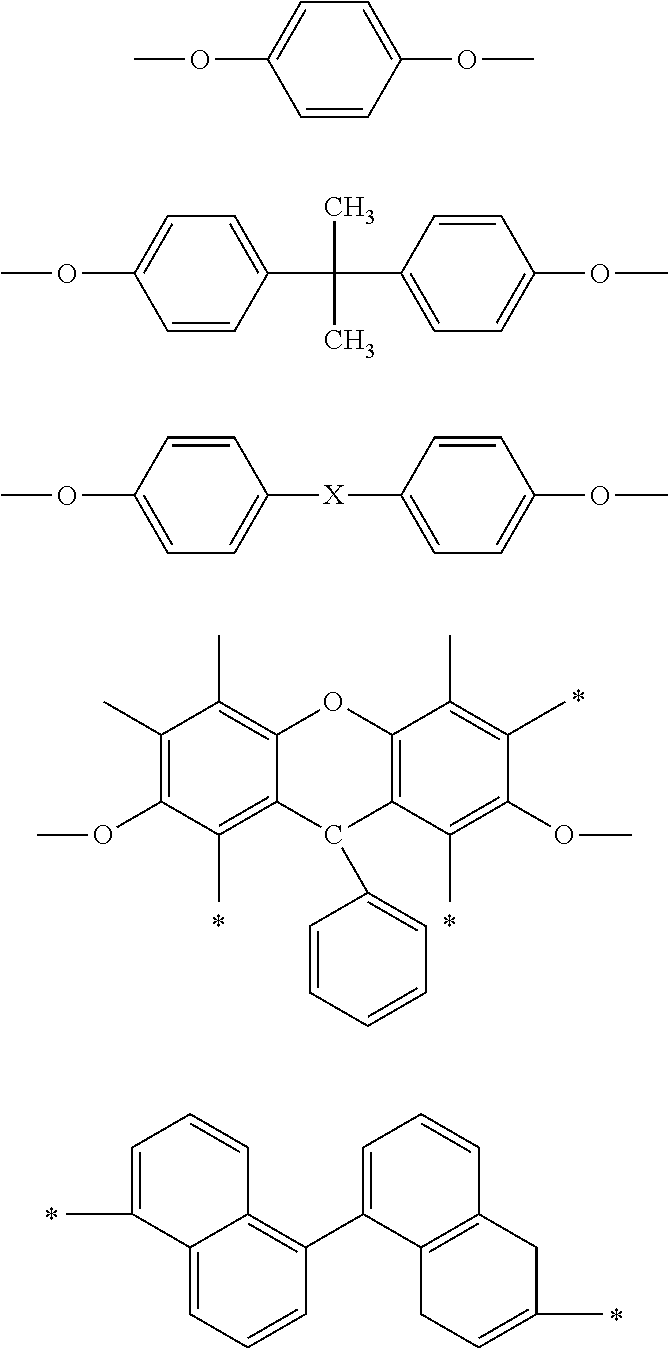Thermosetting resin composition and prepreg or laminate using the same
a thermosetting resin and composition technology, applied in the direction of synthetic resin layered products, tyre parts, plant products, etc., can solve the problems of low dissipation factor, low dielectric constant of halogen-free material, and inability to achieve flame retardant properties, etc., to achieve high thermal conductive
- Summary
- Abstract
- Description
- Claims
- Application Information
AI Technical Summary
Problems solved by technology
Method used
Image
Examples
embodiment 2
einforced Prepreg
[0035]A prepreg was prepared with the epoxy resin varnish formulated in Embodiment 1 according to Table 1. A woven fiberglass reinforced material (E-glass of 7628, 210 g / m2) was impregnated with the varnish, removed of excessive resin by passing through a gap with a distance of typically about 0.015″ between two rollers, and passed through a tunnel oven at 170° C. for about 5-6 min. After cooling, the resin content was tested, which could be adjusted by adjusting the gap between the rollers. The curing degree of the organic or inorganic woven or non-woven fiber reinforced prepreg was measured by melt viscosity (CAP2000 @ 145° C.) or gel time (@ 171° C.), and the melting viscosity was about 200-400 cp and the gel time was about 100-140 s.
embodiment 3
this Embodiment, Preparation of a Copper Foil Substrate was Taken as an Example)
[0036]A copper foil substrate was prepared with the prepreg prepared in Embodiment 2. Prepreg of 7628 was cut to have a size of 18″×24″, and 8 prepregs were laminated between two copper foils of 1 oz. Then, the Cu-prepreg-Cu structure was placed in two stainless steel plates, and finally the laminated structure was sent into a vacuum laminating machine for further curing, in which thermal energy of at least 190° C. / 90 min or above was needed for the prepreg to complete the curing reaction. Moreover, a pressure of at least 285-psi needed to be applied (for 90 min) to strengthen the bonding strength between the prepregs and the bonding strength between the prepreg and the copper foil, and the vacuum level in the vacuum laminating machine needed to be maintained at 700 torr or above, to avoid remaining of gas in the prepreg during curing.
[0037]Table 2 below shows the electrical, mechanical, and physical pro...
PUM
| Property | Measurement | Unit |
|---|---|---|
| particle size | aaaaa | aaaaa |
| wt % | aaaaa | aaaaa |
| wt % | aaaaa | aaaaa |
Abstract
Description
Claims
Application Information
 Login to View More
Login to View More - R&D
- Intellectual Property
- Life Sciences
- Materials
- Tech Scout
- Unparalleled Data Quality
- Higher Quality Content
- 60% Fewer Hallucinations
Browse by: Latest US Patents, China's latest patents, Technical Efficacy Thesaurus, Application Domain, Technology Topic, Popular Technical Reports.
© 2025 PatSnap. All rights reserved.Legal|Privacy policy|Modern Slavery Act Transparency Statement|Sitemap|About US| Contact US: help@patsnap.com



